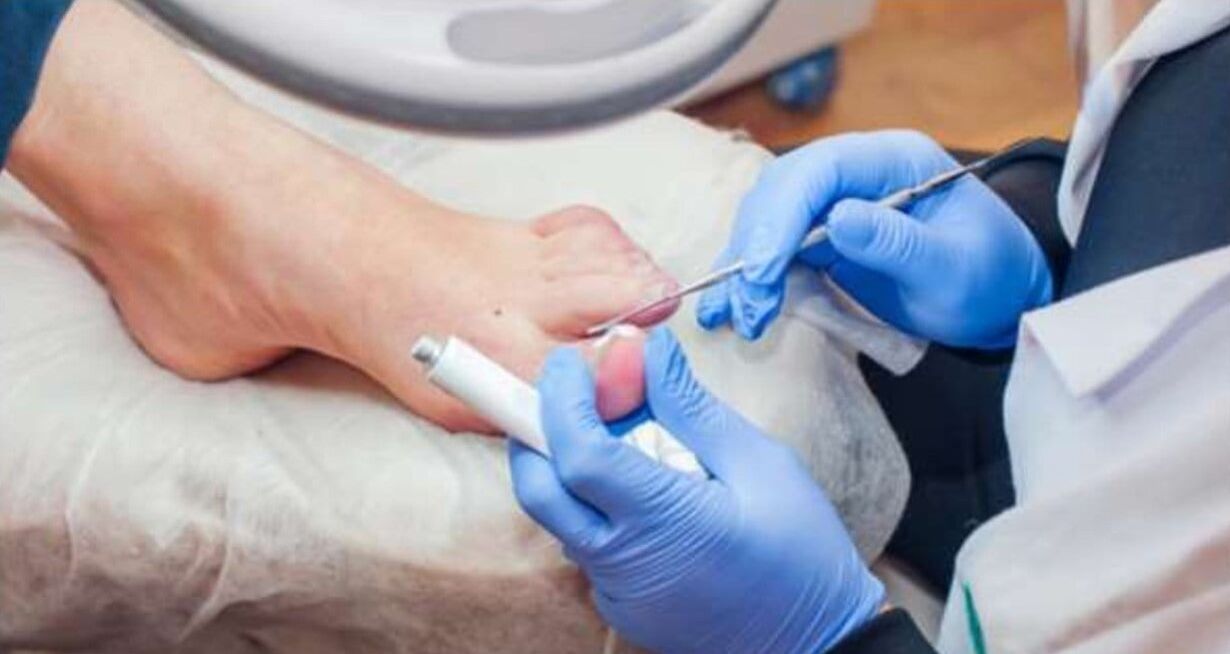Nail and foot fungal diseases are spreading.

Reason
Doctors divide fungal diseases of the feet and nails into two groups. The first includes diseases called epidermal diseases, caused by the fungus Trichophyton interdigitale, the second - rubrophytosis, which occurs when the Trichophyton rubrum fungus proliferates. These fungi can affect both the nail plate and the interstitial folds, the soles of the feet, and the back of the foot.
Factors that contribute to fungal infections:
- cracks, abrasions in interdental folds due to sweating or dry skin, abrasion, poor dryness after a water procedure, narrow finger spacing, flat feet, tight shoes, etc. v. . . ;
- vascular disease, limb frostbite, standing working, varicose veins, decreased immunity, endocrine disease, stress;
- Career factors - work in mining businesses, in the metallurgical and chemical industries. Nail and foot fungus often affects soldiers and athletes, this is also due to their professional characteristics.
It can be spread through close contact with an infected person or through objects that the person has used. From a pollution point of view, bathrooms, swimming pools and other public places with high humidity are "dangerous". There, ideal "greenhouse" conditions were created for fungi: temperature and humidity. In addition, nails, almost entirely composed of keratin, are an excellent breeding ground for fungi.
Once inside the nail, the fungus grows and multiplies very slowly. Gradually, the nail will dissolve, displace and spread to the surrounding skin.
What's happening?
With a fungal foot skin infection, this process usually begins with folds between the thumbs. Cracks and flaking form in these places. After that, the skin begins to red and itchy. This process usually occurs in the back of the foot, the foot, the bone of the toes. Other clinical forms of fungal infection may also occur.
Nail fungus manifest as follows:
- Nail color: white, yellow, brown, black. Nails are dull, opaque.
- Foundation surface: uneven, rough. The nail is broken.
- Foundation Thickness: thickening or thinning / delamination.
- Foundation shape: deformation.
- Nail folds: there is no change or inflammation.
The remarkable deformation of the nails and their thickening create certain difficulties when cutting them. Additionally, the pressure of a thick nail on the underlying tissue (nail layer), as well as the pressure the shoe has on the nail, can be painful in many cases.
Diagnosis and treatment
The diagnosis and treatment of fungal diseases are carried out by a dermatologist. First, the doctor will ask you to scrape tartar - to determine the type of fungus and prescribe the necessary treatment. Furthermore, certain drugs are prescribed based on the patient's general condition, the presence or absence of other diseases. As a result, self-medication is ineffective, and can sometimes even worsen the course of the disease.
The main danger of a fungal foot infection is that it will progress continuously. If the fungus is not treated, starting on one nail, it will spread to others, then to nearby skin or nail areas. In rare cases, even damage to internal organs.
In addition, the agents that cause this disease, which are very powerful allergens, can rebuild the body's sensitivities and thus cause various types of allergic reactions.
Many patients prefer to use widely advertised antifungal oils and ointments. It should be remembered that antifungal varnishes help only in the early stages of the disease and do not affect the entire thickness of the nail - in many cases, it is necessary to take pills (tablets) inside. Also, some creams only work on the skin and don't get into the nails. These funds are mainly used for prevention.
Sometimes people don't go to the doctor for fear of the complete removal of their fingernails. This won't happen because the delete method is no longer applied. Strong antifungal drugs are currently in use, when used correctly, they completely eliminate the fungus.
During the treatment of a fungal infection and once it is completed, it is important to disinfect everything that the fungus has come into contact with. Disinfection should be applied to floors, walls, bathroom millet, shower, bathroom, as well as patient's personal belongings: linens, shoes, skin and nail care items.
You can reduce your risk of fungal infections by following the following recommendations:
- use personal towels;
- wearing personal shoes in the house;
- shower after swimming pool;
- do not wear slippers when visiting;
- Don't try barefoot shoes in the store.


























